Tamara Cofman Wittes, a senior fellow in the Center for Middle East Policy at Brookings, delivered testimony before the House Foreign Affairs Subcommittee on the Middle East and Africa regarding Crown Prince Mohammed Bin Salman’s power politics in Saudi Arabia and Lebanon, and how it is linked to the latest developments in the Syrian civil war. Learn more here.
Madam Chairman, Ranking Member Deutch, distinguished members of the subcommittee, good morning. Thank you for inviting me to share my analysis with you today. I must begin, as always, by noting that I represent only myself before you today; the Brookings Institution does not take any institutional positions on policy issues.
Today’s hearing is called amidst events that mark a turning point in two interwoven Middle Eastern conflicts that have consumed the attention of the region and the United States in the last several years.
- The ouster of the Islamic State group from nearly all of the territory it controlled in Iraq and Syria is an unalloyed good, but begs the question of who will establish and administer governance in the liberated areas, how displaced populations can return in safety and security, and how to prevent extremist violence from remerging in Syria and Iraq.
- The Assad regime, with robust support from Russia, Iran, and Hezbollah, and in the face of global indifference, has nearly defeated its armed opposition, after displacing half its population and slaughtering a half-million people. Assad and his patrons seem prepared now to enshrine his victory in a political settlement, and this begs the question of what kind of diplomatic process can produce any hope for lasting peace, much less dignity or justice for the Syrian people.
The answers to these questions will shape the future of the Middle East, the balance of power amongst the major players in the region, and the role of outsiders, including the United States, in the region’s future order. It’s thus an important moment to review and reconsider American policy. So I will address the committee’s questions regarding Lebanon, Saudi Arabia, and American policy through the lens of this regional fulcrum, and the choices facing the United States at this key moment.
Iran’s Gains from the Syrian War and the Anti-ISIS Campaign
With ISIS on the run, the overarching strategic challenge in the region, for both America and its partners, is Iran’s relentless effort, directly and through local proxies, to subvert other sovereign states in the region and gain influence over their politics. In recent years, regional upheaval has given Iran numerous opportunities to expand its influence and its reach, by exploiting divisions and conflict within Arab societies. At times, Arab leaders have played into this strategy by sharpening instead of healing divisions within their nations, by stoking instead of resolving civil conflicts in the Arab world, and by employing sectarian rhetoric as a tool to mobilize popular support for their policies. When I testified before this committee two and a half years ago, prior to the completion of the JCPOA, I predicted that Iranian efforts at regional influence were likely to escalate whether or not a nuclear deal was agreed to, simply because the opportunities for Iran were so wide and the cost of exploiting them so low. Sadly, that prediction has proven true.
It’s been clear for some time that, should the Assad regime survive the Syrian civil war, it would emerge even more dependent on Iran than before, and that a Syria dominated by Iranian power and influence would be destabilizing and dangerous for the region and for American partners. I testified to this committee about eighteen months ago as to growing Israeli concerns over precisely the scenario we now see unfolding, in which Assad remains the head of government in a Syria that is essentially an Iranian suzerainty. What’s changed in recent months is the public voicing of those concerns by Israeli officials, and increased Israeli activism to establish its own red lines with respect to Iranian and Hezbollah behavior in Syria.
What’s also changed is that these concerns are exacerbated by the role of Iraqi Shia militias in liberating territory on the Iraqi-Syrian border from ISIS and then reportedly crossing into Syrian territory in early November to help the Syrian Arab Army oust ISIS from Al-Bukamal. This apparent coordination between Iranian-backed militias in Syria and Iraq, and the effort to solidify hold over a land corridor stretching from Baghdad to Beirut, represents an escalation of the challenge Iranian influence poses to American partners and to regional stability. But it is worth noting that this presents a difference of degree, not a difference in kind. The Iranian challenge has been consistent, and consistently growing, at least since 2011 and some would argue since the U.S. invasion of Iraq in 2003.
Constraining and reversing this expansion of Iranian influence in the region is a worthy and important goal for American policy in the context of stabilizing a disordered region. It is a goal that, for the moment, unites most of America’s regional partners, and one that could bring others in the international community on board. But pursuing this goal will require persistence, trust with American allies, resolution of regional conflicts, dialogue with a wide range of international partners – in other words, adroit and assertive American diplomacy.
Whereas two years ago, America’s major regional partners disagreed as to whether Iran’s regional troublemaking, or its nuclear program, was the greatest threat, today they are united in their focus on the regional subversion. Indeed, this singular goal has become the shared focus of America’s regional partners in part because the JCPOA has, for now, bracketed the nuclear program that had been a second major vector for Iranian threat projection against America and its allies. Saudi Arabia is one of America’s closest regional partners, and the government in Riyadh views regional developments almost exclusively through the lens of their concern about the rise and expansion of Iranian influence in the Arab world. Israel, America’s closest Middle Eastern ally, likewise is focused primarily on the implications of this moment for the Iranian threat. Both these American partners seek to push back against Iranian expansionism, and both seek a more active and engaged American role in the Middle East. This convergence of interests around a shared threat may offer opportunities for these two countries to work more closely together with the United States to establish a more stable and secure equilibrium in the Middle East.
A shared threat, however, does not a shared strategy make. Saudi Arabia, Israel, and other American partners like Egypt and Jordan, do not share common priorities in the region, not even when it comes to where and how to try and constrain Iranian influence. They do not share a vision for what a more engaged American role should look like. And most significantly, they do not share a vision for what a new Middle East order should look like, or what they themselves must do to achieve it. This means that American leadership is necessary, although not sufficient, to harmonize the efforts of our various friends on behalf of a shared goal. I will try in the testimony that follows to lay out a few of these divergent perspectives, and suggest components for a successful American effort to contain Iranian expansionism.
What is Riyadh Thinking?
Saudi Arabia’s greatest concern in the region is the rise and expansion of Iranian influence. Everything that the Kingdom is doing outside its borders – and some of what it’s doing inside its borders – is a response to this threat.
Over the last months, the Saudi government has taken a number of steps that serve to consolidate, centralize, and underscore Mohammed bin Salman’s control over the levers of power in the Kingdom, and his determination to undertake significant changes in the orientation of both domestic and foreign policy. The events of the past month – the wide-ranging arrests on vague charges of corruption, and the forced resignation of Saad Hariri as prime minister of Lebanon – are of a piece with the approach we’ve seen since King Salman ascended the throne and designated his son as then-deputy crown prince. The swiftness and decisiveness of Saudi decision-making has surprised many, and raised concerns about recklessness or at least a tolerance for risk that some observers find unnerving. Most concretely, the Saudi decision to intervene in Yemen appears impetuous and ill-considered, miring the Kingdom in a military quagmire, producing a nightmarish level of human suffering, and strengthening both Al Qaeda of the Arabian Peninsula and Iran.
Domestic Policy
At the same time, it’s important to recognize that this shift in leadership style follows years of decision-making in Riyadh that was slow and cautious, even as events in the region and at home demanded a robust response. To Saudis and others in the Middle East who were concerned about the wave of popular revolution sweeping the region, alarmed at the growth of Iranian influence, and frustrated by the stagnation of the Saudi economy and society, this double-barreled assault on the status quo must feel refreshing, if uncertain.
In the domestic arena, Mohammed bin Salman is now dancing on a knife’s edge. He has announced and begun, but has not fully carried out, a set of reforms that will dramatically reset the economic and political foundations of the Kingdom. Politically, he is laying the basis for the first transfer of power to a grandson of the Kingdom’s founder, Abdul Aziz al-Saud; he is also shifting the monarchy’s political base from a network of royals and elites who live off state patronage to a wider more populist base in Saudi’s overwhelmingly large rising generation. He seeks to consolidate this shift by centralizing power in his own hands, marginalizing and discrediting rival royal family members, and promising young Saudis better services, greater social freedom and wider economic opportunities.
Economically, Mohammed bin Salman seeks to diversify Saudi Arabia’s energy-based economy and expand its private sector, to compensate for long-term lower oil prices, to create more jobs for young Saudis, and to extend the country’s prosperity into the post-oil era. But to do this, he must slash government subsidies and rein in a very leaky and bloated government budget, while raising cash for domestic investment, including through a public offering of 5% of the state oil company.
Some of the young crown prince’s political and economic goals seem contradictory – for example, it’s very hard to inspire the confidence of foreign investors while casting doubt on your nation’s reliability and rule of law by arresting hundreds on vague corruption charges with no public evidence or judicial process. It’s very hard to encourage innovation and promise young Saudis greater opportunity to pursue their dreams, while severely restricting freedom of expression and enforcing the horrific guardianship laws that allow Saudi males to treat their daughters, sisters, and wives like chattel.
The real question is whether Mohammed bin Salman’s bold decision making can keep up with the changes already underway in and around Saudi Arabia. Can he shift his political base and make new friends faster than he is alienating his opponents amongst the royal family and the old elites? Can he catalyze new growth and investment in the Saudi economy faster than the drop in oil prices and the burdens of social services and regional leadership are draining government reserves? And can he really put a fence around the extreme interpretation of Islam that has dominated Saudi public life, overtaken the educational system and the airwaves, and been an arm of Saudi foreign policy for decades? My own view is that top-down reform, without meaningful improvements in government accountability, transparency, and inclusion, will not ultimately succeed in winning the support either of foreign investors or, more importantly, the Kingdom’s citizens. I detail that analysis in this paper.
Foreign Policy
Despite the dramatic shift in speed and tone, in foreign policy, the primary motives of Saudi policy remain the same: to push back revolutionary movements and to contain Iranian influence. But Saudi tactics and tone have changed, from risk-averse to risk-taking, from hedging bets between dialogue and confrontation with Tehran to going all-in on a face-off designed to unsettle Iran, raise its costs, and try to impose some red lines on its behavior. In some areas, the policy has involved primarily soft power, and brought noticeable gains – such as Saudi Arabia’s warmer relations with the government in Baghdad, its opening of the Saudi-Iraqi border to trade, and its outreach to Iraqi Shia political figures. In other areas, like Yemen and now Lebanon, the approach has been more unilateral and coercive, and reveals the limits of the Kingdom’s leverage and capacity to shape events. These are the areas of greatest risk for the United States and its partners. The bottom line is that Saudi Arabia is far more effective in regional affairs with carrots than sticks, and its current leadership’s propensity for confrontation has already complicated key U.S. policy goals including the fight against Islamist terrorism. U.S. policy should encourage Saudi Arabia to stop picking fights and instead invest in conflict resolution and coalition-building around common and concrete objectives.
What is Happening With Lebanon?
Saudi Arabia’s power play in Lebanon should be understood as an attempt to gain leverage over Iran by pressuring its main regional proxy, Hezbollah. The Saudi government is alarmed, not just by Iranian expansionism, but by Hezbollah’s role in facilitating it.
The missile attack on the Riyadh airport last month was a wake-up call, but Saudi worries over the missile threat from Yemen has been growing steadily. While Hezbollah’s Secretary General, Hassan Nasrallah, denies sending missiles to Yemen, the missile fired on Riyadh came from somewhere outside Yemen; and someone either came into the country to fire that sophisticated missile, or trained Yemenis to do so. U.S. forces have intercepted arms shipments from Iran that they believe were destined for the Houthis. And over the last year or so, Hezbollah members have boasted about their involvement with the Houthi insurgency and targeting Saudi Arabia with rockets. Saudi Arabia has faced the possibility that Iran and Hezbollah would create in northern Yemen a duplicate of the challenge Israel faces in southern Lebanon: a hostile militia armed with long-range missiles that threaten Saudi infrastructure and civilian populations. This is an intolerable prospect for the Kingdom, and they are prepared to take dramatic steps to forestall it.
Since 2006, shortly after Rafik Hariri’s assassination and Syria’s military withdrawal from Lebanon, Hezbollah has exercised an effective veto over Lebanese politics. It was Hezbollah’s insistence that left Lebanon without a government for nearly two years before Saad Hariri acceded to the deal that made Hezbollah ally Michel Aoun president and returned Hariri himself to the prime ministry. By removing Hariri’s Sunni fig leaf on a Hezbollah-dominated government in Lebanon, the Saudi leadership apparently hoped to isolate Lebanon economically and politically, and so increase international pressure on Hezbollah to curb its regional activities in favor of shoring up its domestic legitimacy. The Hariri resignation was thus an indirect move to try and constrain Iranian behavior in other conflict arenas outside Lebanon itself.
But the Saudi gambit was ill-suited to this task, for two reasons. First, Lebanon is really on the periphery of the geopolitical struggle between Saudi and Iran. The Kingdom’s leverage there is both limited and blunt, while Hezbollah’s roots in Lebanon are deep and strong. Beyond the Hariri resignation itself, Saudi leverage over Lebanon is economic, and is entirely negative – it could withdraw deposits in the central bank or block the flow of remittances from Gulf-based Lebanese citizens back home. These steps would harm Lebanese Sunnis as much as Hezbollah, if not more – and could plunge Lebanon into political chaos, with unpredictable repercussions. Second, the ham-handedness of the Saudi pressure on Hariri backfired in Lebanon itself, reducing Saudi influence. There, Hariri was seen as acting under a Saudi diktat, held hostage and forced to resign against his own preferences and those of his constituents. Hariri himself has gained popularity even as he has lost Saudi support. Saudi Arabia appears in this context as both a bully and a fickle ally willing to sacrifice its client, Hariri, for the sake of its own interests.
Hezbollah gets to paint itself as the reasonable party, committed to the rules of Lebanese politics in the face of external demands; and Iran is seen as a stalwart supporter to its allies in Lebanon in Syria.
At the moment, Hariri’s resignation is “suspended” while the Lebanese political factions negotiate on a possible bargain to keep him in office. Saudi Arabia’s most urgent concern regarding Iranian and Hezbollah external activity is to halt their cooperation with the Houthi rebels, and especially what the Saudis allege as their supply to the Houthis of long-range missiles. Since Hezbollah publicly denies involvement in Yemen, it’s possible to imagine a deal whereby this covert cooperation ends and Hariri remains as prime minister. But an undeclared end to unacknowledged cooperation is hard to see and hard to enforce; I think we should expect to see continue tussles between Saudi Arabia and Iran over Lebanese politics in the months to come, even if neither of them wants to entirely upset the Lebanese apple cart.
How should the United States respond to these events? The Lebanese state is indeed tainted by Hezbollah – not just its role in formal governance, but also its effective veto power over political decision-making and its apparent penetration of government entities that we hope would serve as independent, unifying national institutions in the fractured country. For example, we saw in August the Lebanese Armed Forces apparently coordinate with Hezbollah, for example, in fighting ISIS along the Lebanese-Syrian border. Additional sanctions and other pressure to cut financing and support for Hezbollah are certainly worthwhile endeavors.
At the same time, increased isolation of or pressure on the Lebanese state by the United States or European countries is unlikely to constrain Iranian or Hezbollah regional behavior in any meaningful way. Destabilizing Lebanon’s politics or economics might even increase the incentives for Hezbollah to bolster its nationalist credentials in the country by provoking a confrontation with Israel. The prospect of instability in Lebanon is unnerving to Israel. Jerusalem is resolutely working to contain the missile threat it faces from Hezbollah and to prevent the group gaining additional capabilities, and Israel is fully prepared for a scenario in which it must quickly work to destroy the extensive missile capability Hezbollah already has. But Israel does not seek to be drawn into a conflict with Hezbollah due to external factors or miscalculations. Such a war, should it come, would likely be intense and costly for civilian populations on both sides of the border.
Hezbollah faces continual pressure in balancing its regional activism on Iran’s behalf with its national claims and constituents in Lebanon itself. As the Syrian war winds down, and Lebanese electoral politics heat up, this balancing act becomes more difficult. The United States should take advantage of this trajectory. The regular functioning of the Lebanese state and the democratic demands of the Lebanese citizenry remain the best mechanisms for constraining Hezbollah’s behavior in Lebanon and toward Israel. The U.S. should stay engaged, continue to support democratic development in Lebanon, push for parliamentary elections to take place next year under maximally free conditions, and hope that one legacy of the maladroit Saudi pressure on Hariri is increased support for his March 14th coalition at the ballot box.
The Disaster in Yemen
The Saudi intervention in Yemen, now nearly three years old, is both a military and a humanitarian disaster. Deaths from the conflict itself have topped 10,000, including many civilian deaths from airstrikes by the Saudi-led and U.S.-backed coalition. But the greater loss of life today is as a result of starvation and disease amongst a beleaguered population that was living on the edge even before this conflict began. According to the U.N., twenty million people living in Yemen need emergency humanitarian assistance. Cholera has already infected more than 900,000 people, and killed more than 2000. More than four million women and children are acutely malnourished. The blockade imposed by the Saudi-led coalition after a missile launched from Yemen nearly reached the international airport in Riyadh exacerbated an already-dire lack of food and medicine, and the partial lifting of that blockade has only marginal impact at ameliorating this humanitarian nightmare. The war needs to end as soon as possible.
Militarily, the conflict is at a stalemate, but in a state far worse for Saudi Arabia and for American interests than when the Kingdom intervened nearly three years ago. Intense Saudi suspicion of Houthi connections to Iran is what drew Riyadh into this conflict —and by intervening the Kingdom created a self-fulfilling prophecy, one that boosted the Houthis with support from Iran and Ali Abdullah Saleh, who was once a Saudi client but was ousted with Saudi support in the Arab Spring uprisings of 2011. Meanwhile, the intensification of the conflict via Saudi intervention increased maneuvering space for Al Qaeda in the Arabian Peninsula, the Al Qaeda affiliate that has been the most fixated on attacking the U.S. homeland.
In its effort to beat back Houthi territorial gains and reestablish the Hadi government, Saudi Arabia has achieved what it can through an intensive aerial campaign. It is unlikely to make further territorial gains for the Hadi government without ground operations that would cost significant additional blood and treasure. Saudi Arabia’s allies in this fight have mostly been reluctant partners from the first, and are wary about further investments. Every day the war goes on, the humanitarian costs mount with little real impact on the outcome, which will inevitably involve intricate political compromises and power-sharing amongst Yemen’s rival factions.
The Houthi’s bullheaded approach torpedoed the last round of serious negotiations in 2016, and there appears to be no viable process now underway to seek a settlement for the war. The Saudi Arabian government in fact expressed renewed interest in negotiations just days before the missile attack on Riyadh’s airport last month; the seriousness of the missile threat, if anything, underscores the urgency of effective negotiations. While the previous administration, like this one, provided logistical and intelligence support to the Saudi war effort, Secretary of State Kerry also actively supported a diplomatic process to end the war and President Obama sought toward the end of his term to use American weapons sales as leverage to reduce civilian suffering and push toward conflict resolution. But when it comes to diplomacy, the Trump Administration, aside from the occasional press release, seems to be missing in action. Congress can and should play a role in encouraging an early end to this conflict, and meanwhile should assiduously oversee the implementation of American laws designed to prevent our weapons and assistance being used in ways that violate human rights or the laws of war.
Yemen is another area, like Iraq and Syria, where divergent priorities amongst seemingly allied governments complicate efforts to end conflict and stabilize the region. In this instance, the United Arab Emirates objects to the inclusion of Yemen’s Islah (Reform) party in a postwar government, because of the party’s ties to the Muslim Brotherhood, and has reportedly given support to a separatist coalition that rejects the internationally recognized Hadi government. Mohammed bin Salman recently met with representatives of Islah to build support for the Hadi government. Until the Saudi-led coalition can resolve its own internal differences, it’s hard to see how diplomacy can make progress.
U.S. Policy: How to Push Back on Iran?
Confronting the reality of stalemate in Lebanon and Yemen, we return to the Syrian-Iraqi arena as the place where it might still be possible, and meaningful, to push back against Iranian influence. How might the United States achieve such a goal?
The first step is to realize that America cannot afford to rapidly draw down engagement in Syria and Iraq just because ISIS has been ousted. As recently as August, U.S. special envoy Brett McGurk emphasized to international partners that the United States would not seek to rebuild effective security or governance in those parts of Syria it had liberated from ISIS, but would undertake “basic stabilization” before withdrawing. This sent a signal to actors in the region, and to Russia, that the United States sought no direct leverage over a political settlement in Syria. It’s no surprise that Iranian-backed forces then rushed for the Iraqi-Syria border. Carrying through such an intention also means leaving America’s anti-ISIS partners, primarily the Kurdish fighters who make up most of the Syrian Democratic Forces, to cut their own deal with Damascus and its Iranian patron.
More recently, administration officials have backtracked and signaled that U.S. forces may remain on the ground in Syria longer, but it’s not clear what the administration’s strategy is for leveraging that military presence into gains at the diplomatic table. It is hard to imagine how this tactic can work when President Trump seems satisfied leaving the diplomatic initiative in Putin’s hands. It is imperative that the United States seek to enforce Russia’s formal commitment to the Geneva process, and to a political transition in Syria, as the bases for a political settlement. The clear priority for American engagement in the Geneva process should be to insist, with the united support of the Arab parties to the talks and the Syrian opposition, that all foreign fighters – including and especially the Iranian-sponsored foreign militias, and Hezbollah – demobilize and ultimately withdraw from Syrian territory. Russia can hardly object to a goal of removing nonstate foreign fighters, when its ostensible justification for intervening in Syria was to combat terrorism.
In Iraq, it is imperative that the United States remain engaged diplomatically and politically, to head off further Kurdish-Arab confrontation, to encourage Saudi-Iraqi rapprochement, to constrain the role of the pro-Iranian Popular Mobilization Forces, and to nudge important Shia political leaders like Moqtada al-Sadr and Ayatollah al-Sistani farther away from Tehran’s orbit. Iraqi elections are expected next spring, and like the Lebanese elections they are an opportunity for local champions of national sovereignty and opponents of Iranian influence to demonstrate their strength and determination.
More broadly, containing Iran demands a wide and diverse international coalition to constrain Iran’s regional interventions, to marginalize and weaken its proxy forces, to expose Iranian sponsorship of terrorism, and to enforce constraints on Iran’s missile proliferation and missile program. Components of such a coalition effort would include:
- persuading Russia, as the dominant actor in Syria, to constrain IRGC and Hezbollah freedom of movement within the country, and to enforce understandings excluding these forces from the “de-escalation” zones and, later, to extend those understandings into other parts of the country by writing them into a political settlement of the civil war.
- using the United Nations platform to call out and punish Iranian violations of Security Council resolutions pertaining to its ballistic missile program.
- building on strong intelligence cooperation with regional and international partners, expose and interdict Iranian activities such as weapons proliferation, sponsorship of terrorism, and subversion of domestic politics.
- persuading European countries and China that Middle East stability is a global public good, and that Iranian interventionism degrades that good. They should therefore slow their diplomatic and economic re-engagement with Iran, and condition those relations on Iran’s pulling back especially from the conflicts in Syria and Yemen. Iran’s involvement in these two wars has prolonged their violence, magnified the human suffering, displaced large numbers of people including into Europe, exacerbated the terrorist threat emanating from these places, and threatened free flows of energy and commerce in and out of the Middle East. These phenomena should be of significant concern to European and Asian governments, and motivate them to cooperate in a multilateral pressure campaign on Tehran.
As with the effort that brought Iran to the nuclear table, ramping up international pressure to a level that shifts Iranian behavior will require painstaking and persistent diplomatic work by the United States, alongside stepped-up pressure through sanctions and U.N. bodies. It should be obvious that building this international pressure is an uphill climb as long as the U.S. commitment to its JCPOA obligations is in question.
The most important tool in the American policy toolbox to contain Iran and restore stability to this disordered region is the tool the Trump Administration seems most committed to destroying: our diplomacy. Congress and this Committee can work to hold the administration accountable for building a credible, coherent diplomatic strategy to advance American interests and support American partners in the Middle East.
The Brookings Institution is committed to quality, independence, and impact.
We are supported by a diverse array of funders. In line with our values and policies, each Brookings publication represents the sole views of its author(s).
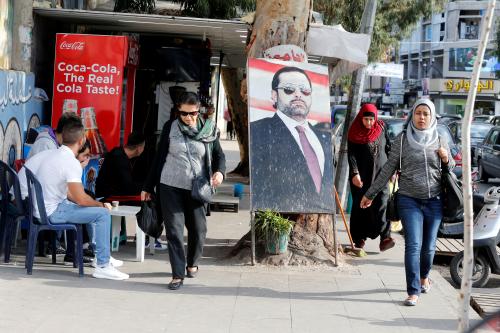
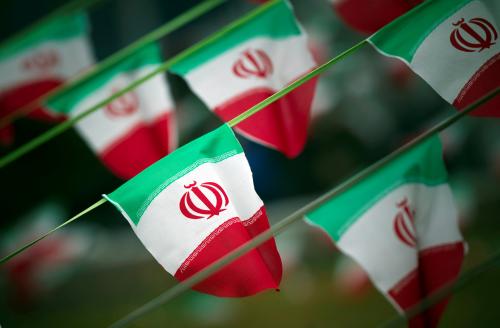
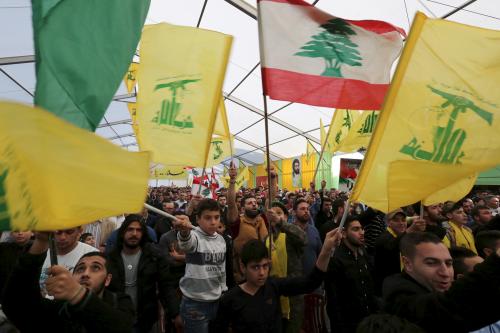

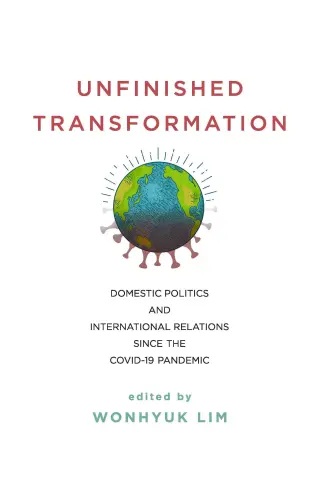
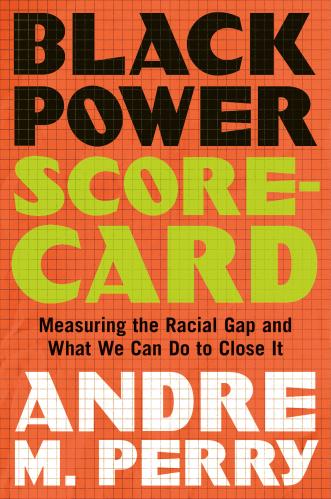


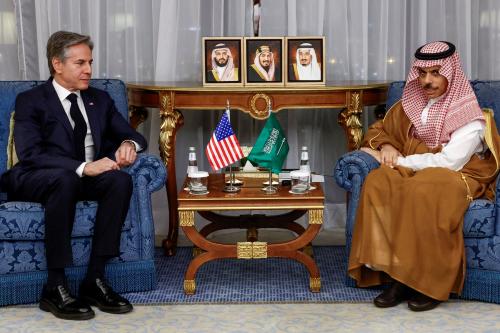
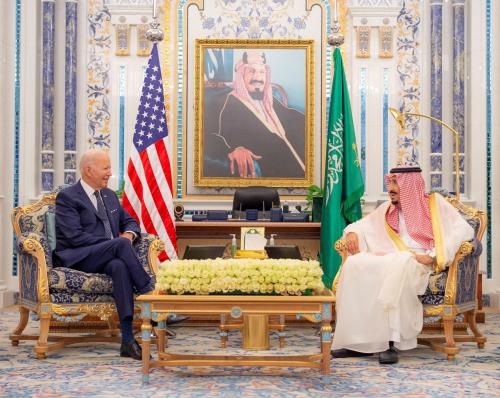
Commentary
TestimonyThe latest developments in Saudi Arabia and Lebanon
November 30, 2017